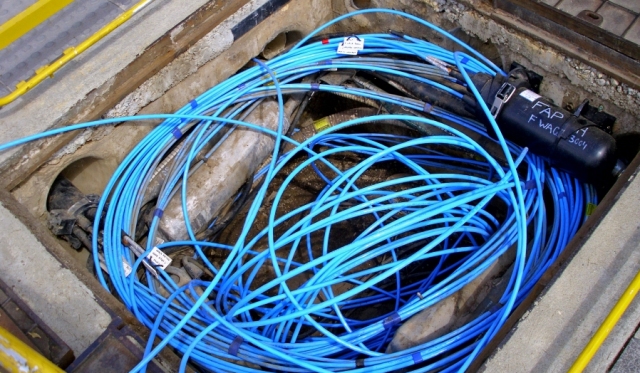 India’s digital communications progress will be impacted adversely without the immediate roll-out of fiber across the country, said Broadband India Forum (BIF).
India’s digital communications progress will be impacted adversely without the immediate roll-out of fiber across the country, said Broadband India Forum (BIF).
The infrastructure providers’ inability to secure right-of-way (RoW) to lay the broadband fiber network across states and local municipalities is the main challenge preventing fiber deployments, BIF said.
Till August 2019, 362,350 km of optical fiber have been laid connecting 123,840 Gram Panchayats as part of the government’s ambitious BharatNet program to provide high-speed broadband connectivity.
The project, under the National Communications Development Policy (NDCP), aims to provide universal broadband connectivity at 50 Mbps to every citizen, providing 1 Gbps connectivity to all gram panchayats by 2020, and 10 Gbps by 2022.
Fiber-based backhaul has still not mainstreamed in India. Only ~30 percent of mobile towers have fiber enabled backhaul today as compared to 65-70 percent in South Korea, or 75-80 percent in the US, Japan and China. The government intends to increase India’s fiber footprint to 7.5 million fiber kilometers by 2022. In addition, the NDCP aims to fiberize at least 60 percent of telecom towers by 2022.
BIF President TV Ramachandran said, “Although India’s mobile broadband story is second to none, it has not been adequately mirrored by a similar increase on wired broadband. Finally, all mobile traffic has to be hauled back through fiber which is happening very slowly. This is even more important because mobile traffic is becoming increasingly data heavy and mobile spectrum will not be sufficient to address this.”
Ramachandran also highlighted that the investments India makes in increasing and optimising its fiber network will play a significant role in enabling India to get ready for the next generation of communications technologies.
Aruna Sundararajan, former Secretary-Telecom & Chairman, Digital Communications Commission said, “Fiber, like spectrum is a national resource. The Centre has given it high priority and is committed to complete fiberization of the country.”
Sundararajan called for necessary steps to be adopted by the states and said the China model of investments in fixed infrastructure should be followed in order to earn economic competitiveness through communications.
“While the telcos are clearly intent on investing in the fiber network development, certain challenges such as taxes and levies on the industry, and the potential high pricing of spectrum that is essentially needed to be acquired, may prove a hindrance towards their efforts,” she added.
The telcos in India fully realise the need to develop the fiber network infrastructure in the country to at least 5-6 times of the present capacity, in order to propel the digital communications infrastructure and services development in the country.
While the telcos are clearly intent on investing in the fiber network development, certain challenges such as taxes and levies on the industry, and the potential high pricing of spectrum that is essentially needed to be acquired, may prove a hindrance towards their efforts, according to Sundarajan.
To unleash full potential of Digital Economy 2.0, Indian telecom requires the availability of affordable fiber with ease and simplification of procedures for deployment, adequate harmonized spectrum at an affordable price, reduced and rationalized taxes for the sector, and strengthened competition and pricing regulation to prevent the mobile & internet companies from turning into monopolies, BIF said.





